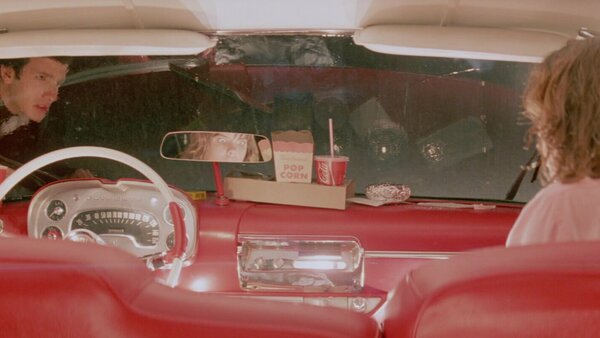Why CHRISTINE Is Secretly The Best Stephen King Movie
Christine, The Politics Of Memory, & John Carpenter's Anti-Establishment Vibes

These themes aren't unusual for Carpenter, whose work has commented on topics such as law and order politics (Assault on Precinct 13, Escape from New York), Bicentennial introspection (The Fog), Cold War paranoia (The Thing) and Reaganomic greed (They Live), and usually features cynical, doom-laden conclusions.
This isn't to describe Carpenter's approach to filmmaking as cynical - wrapped up in his filmography are some of the most sincerely constructed works of the last half-century, typical of a filmmaker who worships at the altar of Howard Hawks - but rather that there's an undercurrent of apocalyptic resignation to these tales, so much so that The Thing, Prince of Darkness, and In The Mouth of Madness have been dubbed the "Apocalypse Trilogy". Christine, while not as doom-laden as those films, still seems to wield plenty of scathing anger, weaponising fifties nostalgia while laying bare that glum sense of decline that became synonymous with the 1970s.
The vessel for all this frustration and subsequent embracement of fifties aesthetics is Gordon's Arnie, who starts Christine as a sort of Charles Martin Smith in American Graffiti figure before evolving into an ersatz James Dean - a nostalgia zombie reanimated by the promise of strength, independence, and sex appeal, all of which is wrapped up in the idea of getting a car, let alone one as demonic as Christine. For Arnie though, a child of the seventies, getting a car and having that freedom and forward mobility at first seems like an insurmountable hurdle, smothered as he is by his parents - especially his mother - and the sense of emasculation that comes with that.
The answer to all his problems is Christine, but even then the rules have changed. Arnie quite literally has to resurrect his love in a Frankenstein manner, rummaging through the rusting, automotive graveyard of Darnell's for parts. It's a stark visual metaphor and contrast to the opening scene that gets at the idea of seventies powerlessness, which Arnie navigates by reaching for the past. The crucial thing here, though, is that he's just swapping one torment for another, with Carpenter turning fifties-style nighttime joyrides, cosy drive-in dates and high school football games into scenes of violence and death.
There's a humourous bent here in how Christine examines that hypermasculine infatuation with cars, with Arnie literally falling in love with his ride only slightly more obsessively than your average first-time buyer, but more interesting is how Carpenter's film approaches the car as a symbol of strength and freedom, and how that reflects that seventies-to-eighties transition. Arnie goes from single, emasculated weakling to a neo-rebel without a cause heartthrob by channeling Christine's fifties spirit, reaching out to classic, slightly cornball Americana the same way movie studios and television companies did, as well with how Reagan channeled white-picket-fence imagery for his landslide 1980 election win.
Again, though, Carpenter illustrates the poisonous effects of this nostalgia in the film. Once restored, Christine becomes Arnie's obsession and murders friends and enemies alike, intimating in turn the sinister core of the decade's sentimental obsessions.
[Article continues on next page...]